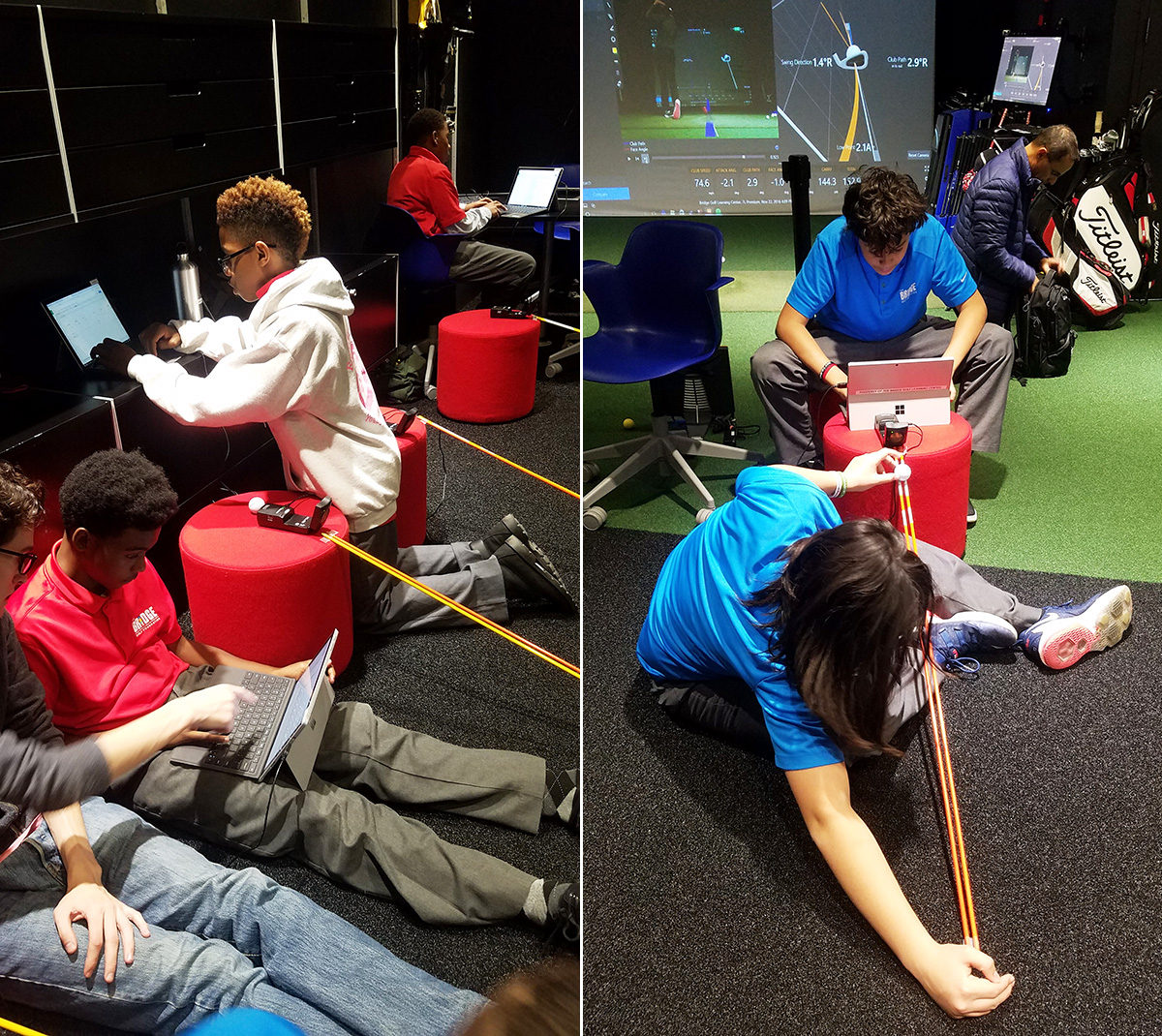By Charles Cohen, STEM Program Assistant
 To round off our section on Newtonian physics, we explored a common physical phenomenon that is often misinterpreted — gravity. Our young men wanted to re-create a famous experiment by Galileo, who is said to have tested his theory of gravitational acceleration by dropping cannonballs from the Tower of Pisa.
To round off our section on Newtonian physics, we explored a common physical phenomenon that is often misinterpreted — gravity. Our young men wanted to re-create a famous experiment by Galileo, who is said to have tested his theory of gravitational acceleration by dropping cannonballs from the Tower of Pisa.
Lacking towers and cannonballs, we instead worked with homemade ramps, golf balls and Almost Golf Balls, which are significantly lighter than the real thing. We started with a question: Which ball would roll downhill faster? Most of the young men chose the heavier golf ball, but the data revealed something else entirely.
For the experiment, the students broke into two teams. They made ramps out of alignment sticks and taped one end to the top of a stool. Then they rolled each ball down the ramp 10 times, recording the acceleration for each roll with a Vernier motion detector, which in turn generated a graph on our Microsoft Surface tablets. The students looked at the graph generated by each roll and recorded the maximum acceleration and the top speed the ball achieved on its trip.
We knew going into the experiment that a ball rolling down a ramp experiences vertical acceleration due to gravity, and our data showed that the velocity of the ball increases constantly as it rolls along the ramp. But the data also showed that the average of all the maximum accelerations did not change very much. This was in contrast to the assumption that the heavier ball would roll faster, or experience greater acceleration.
In the end, our students, just like Galileo, came to realize that the mass of an object does not affect its acceleration due to earth’s gravitational field.